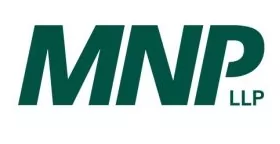Recently MNP proudly contributed to the development of an important new publication by Canada's Public Policy Forum entitled, "Flat, Flexible, and Forward-Thinking: Public Service Next." To support this initiative, Canada's Public Policy Forum convened roundtables across the country with a cross section of Canada's most respected private and public sector leaders, as well as groups of emerging leaders. The purpose of these roundtables was to get a better understanding of the challenges and opportunities facing the sector.
This report is a follow-up on research arising from "Ten Tough Jobs", a report produced in 2010 by the Public Policy Forum, shedding light on the critical importance of effective public sector leadership.
During the roundtable discussions it was particularly impressive to see participants' strong views regarding the need to build public service capacity by focusing not only on boosting current leadership capabilities, but also investing in the future by attracting and developing top leadership talent. In Canada, we are fortunate to have strong leaders who have effectively steered our governments through times of economic and social turmoil – but what is missing is a clear articulation of the competencies and skills that these leaders must demonstrate in order to succeed. It helps us to better understand what an "ideal leader" looks like, thus setting the groundwork for more effective succession planning, pipeline management, and leadership development programs.
I. THE ANSWER IS NOT WHAT YOU'D EXPECT
There are countless articles and research on public sector leadership, most of which include typical lists of competencies such as courageous, compassionate, smart, innovative, cost saving, collaborative, etc. What is refreshing and innovative about this analysis is that the list of required skills includes a much more thoughtful, layered and bold list of competencies, as listed below.
|
Persuasive Entrepreneur Shrewd Diplomat Fearless Advisor Passionate Talent Scout Inspirational Team Captain |
Astute Strategist Empathetic Facilitator Pragmatic Technophile Catalyzing Agent Prudent Manager |
Suffice it to say the report shows how important it is for modern public service leaders to adapt their leadership traits to succeed within a context of growing complexity, increasing risk aversion, resource constraints, and hyper scrutiny by multiple stakeholders. Modern leaders leverage these skills to transform their cultures and modernize their practices in order to nurture the flat, flexible, and forward-looking organizations that are required to remain relevant and resilient in today's society.
II. YOUNGER, PASSIONATE AND TRANSFORMATIVE LEADERS
This research makes a welcome departure from simply interviewing "the old boys club." It was valuable to hear the voices of passionate, diverse, hyper-smart and savvy Gen-Xers from across the country. Their views are novel and provide hope that the future of public sector leadership is not as bleak as many doomsayers are predicting.
Future leaders will emerge from a younger generation that possesses quite different career and work expectations. As we bid adieu to the baby boom cohort, tomorrow's Gen X / Y leaders are maturing in a global, interconnected world where change is the norm. Therefore developing these future chiefs will not be a seamless process within the public service. During their careers, they will likely transition to and from numerous organizations in the public, private, and non-profit sectors. Leadership development processes will have to adjust to accommodate these habits and preferences. Succession plans also need to clear away some of the institutional barriers to rapid career advancement that can lurk within many public sector organizations. Governments will benefit from the diverse experience and insights that these passionate young individuals will contribute during their journey to the top.
Flat, Flexible, and Forward-Thinking also underscores the need to effectively manage change. I believe that one of the identified leadership profiles in particular, "catalyzing agent", is a critical skill that will help to deftly balance "changing the business" with "running the business".
III. A USEFUL TOOL TO CULTIVATE TALENT AND MANAGE SUCCESSION
Flat, Flexible, and Forward-Thinking shows us what successful leaders can look like, measured in terms of a clearly articulated competency model. The leadership profiles described in the report can contribute to more effective pipeline planning processes, leadership assessment, recruitment, and the compensation programs needed to drive strategic leadership development. If we want to build a high performing public service for the future, we must first develop thoughtful talent management strategies necessary to attract, develop, and retain the right type of leaders.

As the pool of experienced leaders diminishes (due to the rapidly increasing retirement of baby boomers), organizations urgently need to create a robust pipeline of potential leaders. Competition is intensifying for these highly qualified individuals, so today's public sector leaders must create the culture, processes, and succession plans to attract, nurture, and cultivate the most promising candidates. The competencies listed in Flat, Flexible, and Forward-Thinking will help public sector leaders maintain direction while weathering the storm.
IV. HOPE FOR THE FUTURE
My hope is that today's public service leaders will learn from the valuable insights, the 10 competencies, and the suggested strategies for building future capacity that are portrayed in this report. Flat, Flexible, and Forward-Thinking sets the competency bar very high – an inspiring persona who will address tomorrow's challenges with astuteness, empathy, catalysis, prudence, persuasiveness, shrewdness, fearlessness, pragmatism, passion, and inspiration. Where will these super heroes be found? It will not be easy, but Flat, Flexible, and Forward-Thinking provides the foundational competency model needed to inform effective succession planning and leadership development.
This article was previously published in Public Sector Digest.
The content of this article is intended to provide a general guide to the subject matter. Specialist advice should be sought about your specific circumstances.

